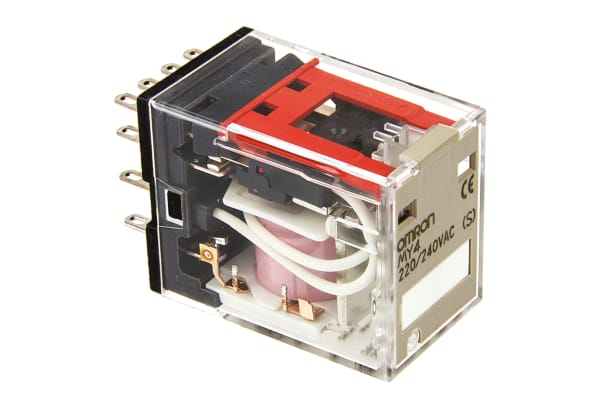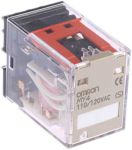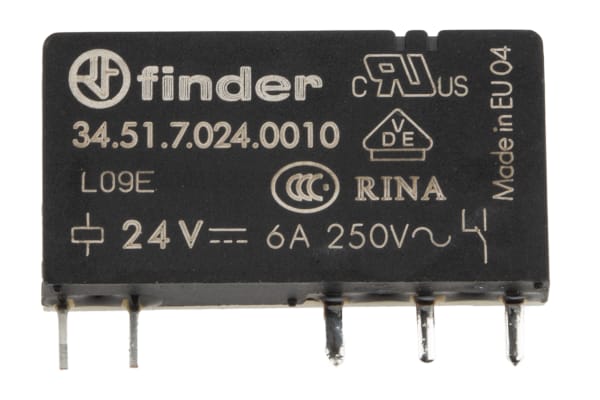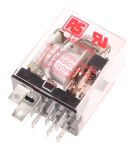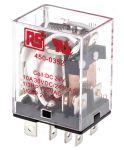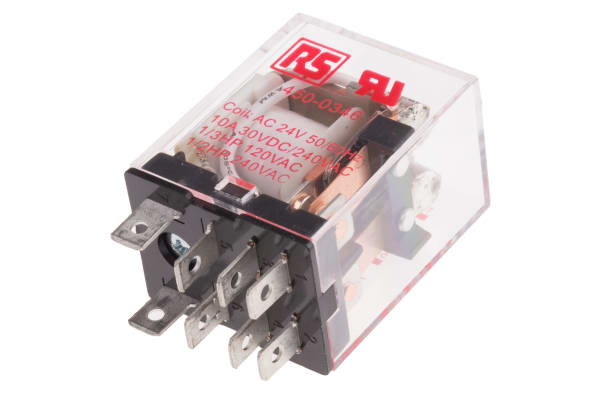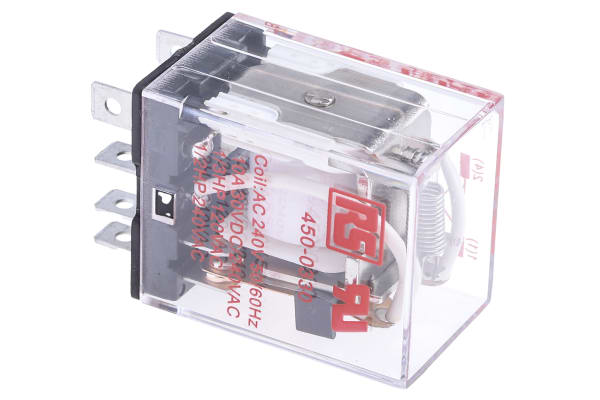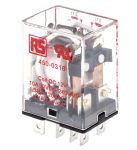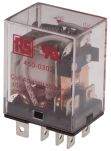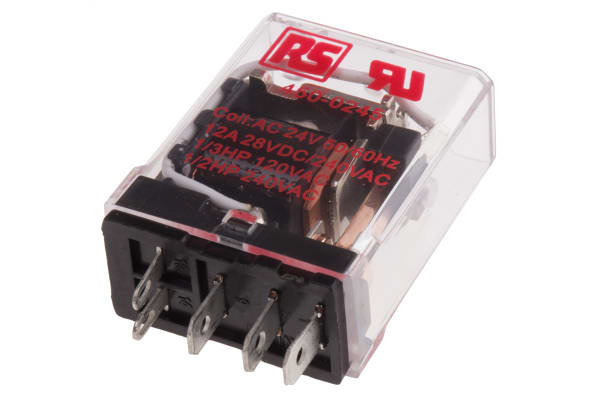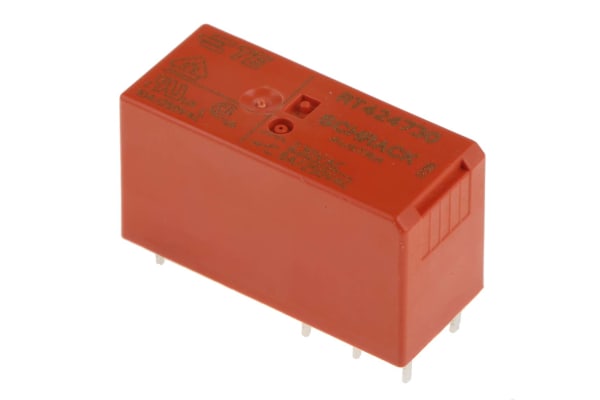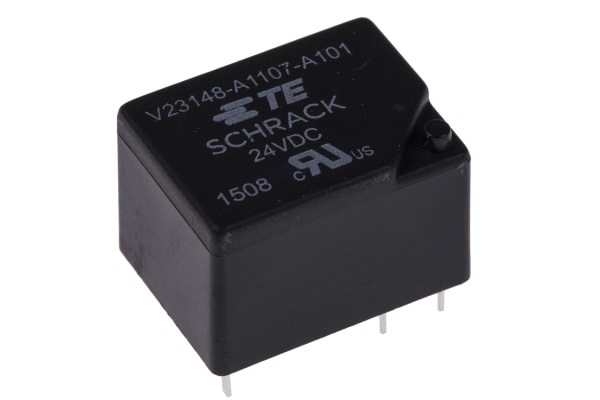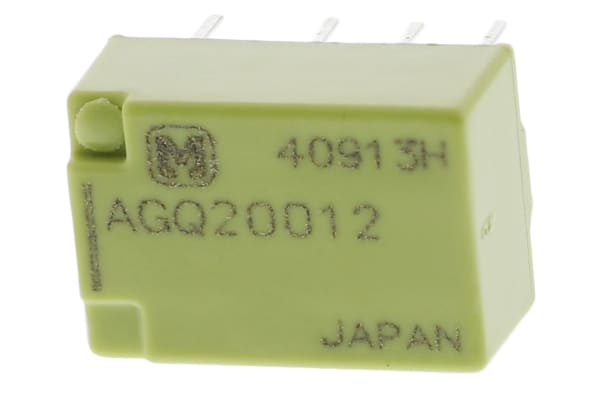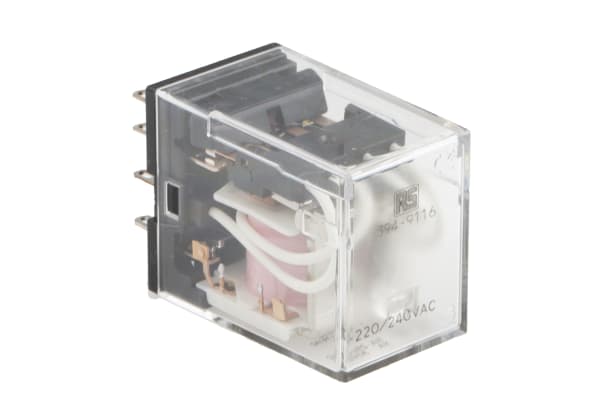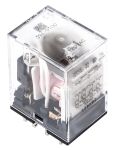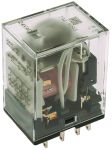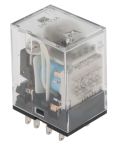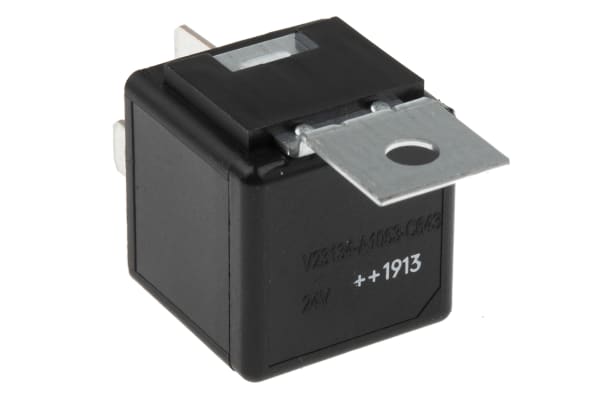Non-Latching Relays
Relays are electrical switches that are operated by electrical impulses with the primary function to open and close a circuit, they can also be referred to as industrial switches. There are 2 main types available, latching and non–latching relays.How do non-latching relays work?Non-latching relays are in a normally closed (NC) position and will stay in this state without power. When power passes through the circuit, the relay switched to a normally open (NO) position by using an internal coil to generate a magnetic force, holding this NO position. Once the current is turned off, it returns to the NC position. This makes non-latching relays well suited to push-button applications like keyboards and micro-controller input buttons.What are non-latching relays used for?Non-latching relays are highly durable and versatile components, making their performance long lasting and suitable for use in a wide range of applications, such as:Automotive enginesHousehold appliancesIndustrial machineryMedical equipmentTelecommunications equipmentWhat is the difference between latching and non-latching relays?Both types of relays in similar in design and function, however, a significant difference between them is that a latching relay will remain in the last position it when it was last powered, whereas a non-latching goes back to its normal position. This makes each more type of relay suitable for different applications. Considerations when selecting a relayWhen choosing a relay, it is important to consider a number of specifications to ensure it is fit for purpose, some factors include:Coil voltage – the required voltage to actuate the switching mechanism. If a voltage is too high this could damage the components, if it is too low then it will not actuate. Contact configuration – This is the state the contacts are in without power. For example SPST, single pole single throw.Contact material – the relay contacts are available in many materials that have certain properties. Common materials are gold, silver, tin oxide and nickel Coil power – the amount of power (watts) the coil operates at. This must match the power in the circuit for correct function. Coil resistance – the amount of resistance (ohms) in the circuit that the coil creates.
-
Omron, 240V ac Coil Non-Latching Relay 4PDT, 5A Switching Current Plug In, 4 Pole, MY4 AC220/240(S)
IDR191,738.92 -
4PDT PLUG-IN RELAY,5A 110/120VAC COIL
IDR172,229.38 -
TE Connectivity, 5V dc Coil Non-Latching Relay DPDT, 1A Switching Current PCB Mount, 2 Pole, V23105A5301A201
IDR55,801.48 -
Finder, 24V dc Coil Non-Latching Relay SPDT, 6A Switching Current PCB Mount Single Pole, 34.51.7.024.0010
IDR110,029.61 -
Finder, 24V ac/dc Coil Non-Latching Relay SPDT, 16A Switching Current DIN Rail Single Pole, 13.01.0.024.0000
IDR1,260,777.80 -
RS PRO, 24V dc Coil Non-Latching Relay DPDT, 10A Switching Current Plug In, 2 Pole
IDR143,804.19 -
RS PRO, 240V ac Coil Non-Latching Relay DPDT, 10A Switching Current Plug In, 2 Pole
IDR154,922.53 -
RS PRO, 230V ac Coil Non-Latching Relay DPDT, 10A Switching Current Plug In, 2 Pole
IDR147,370.45 -
RS PRO, 24V dc Coil Non-Latching Relay DPDT, 10A Switching Current Plug In, 2 Pole
IDR132,476.07 -
RS PRO, 24V ac Coil Non-Latching Relay DPDT, 10A Switching Current Plug In, 2 Pole
IDR141,496.61 -
RS PRO, 240V ac Coil Non-Latching Relay DPDT, 10A Switching Current Plug In, 2 Pole
IDR95,240.12 -
RS PRO, 12V dc Coil Non-Latching Relay DPDT, 10A Switching Current Plug In, 2 Pole
IDR137,405.90 -
RS PRO, 110V ac Coil Non-Latching Relay DPDT, 10A Switching Current Plug In, 2 Pole
IDR135,308.10 -
RS PRO, 24V dc Coil Non-Latching Relay SPDT, 15A Switching Current Socket Mount Single Pole
IDR161,740.38 -
RS PRO, 24V ac Coil Non-Latching Relay SPDT, 15A Switching Current PCB Mount Single Pole
IDR127,546.24 -
TE Connectivity, 230V ac Coil Non-Latching Relay DPDT, 8A Switching Current PCB Mount, 2 Pole, RT424730 7-1393243-9
IDR140,657.49 -
TE Connectivity, 24V dc Coil Non-Latching Relay SPNO, 8A Switching Current PCB Mount Single Pole, OJ-SH-124LMH
IDR23,180.69 -
TE Connectivity, 24V dc Coil Non-Latching Relay SPDT, 5A Switching Current PCB Mount Single Pole, V23148A1107A101
IDR172,334.27 -
Panasonic DPDT Non-Latching Relay PCB Mount, 12V dc Coil
IDR38,284.85 -
RS PRO, 240V ac Coil Non-Latching Relay 4PDT, 5A Switching Current Plug In, 4 Pole
IDR100,274.84 -
RS PRO, 120V ac Coil Non-Latching Relay 4PDT, 5A Switching Current Plug In, 4 Pole
IDR109,924.72 -
RS PRO, 24V ac Coil Non-Latching Relay 4PDT, 5A Switching Current Plug In, 4 Pole
IDR133,105.41 -
RS PRO, 12V dc Coil Non-Latching Relay 4PDT, 5A Switching Current Plug In, 4 Pole
IDR130,273.38 -
TE Connectivity, 24V dc Coil Automotive Relay SPDT, 40A Switching Current Plug In Single Pole, V23134A1053C643
IDR195,200.29



